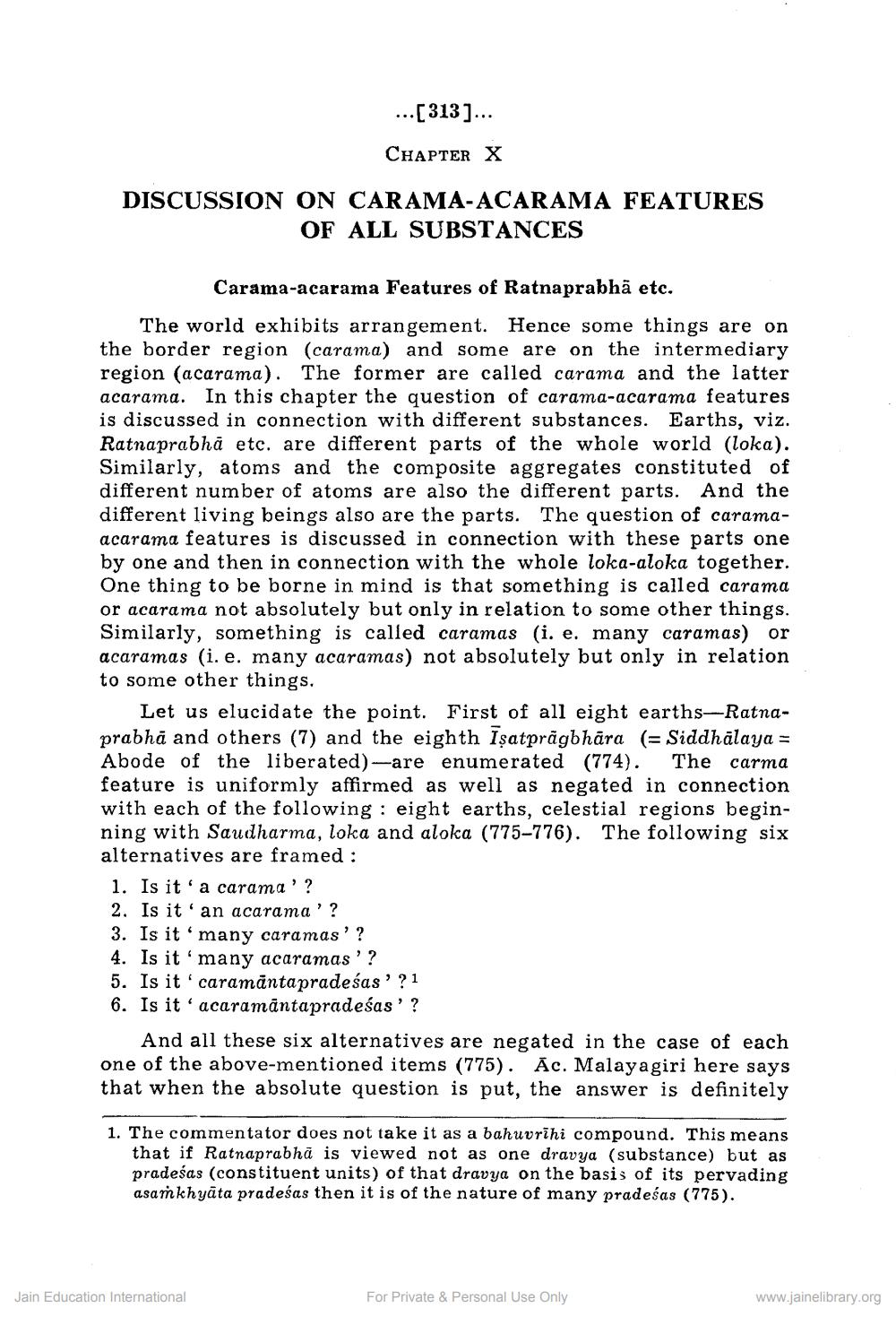________________
... [313]... CHAPTER X
DISCUSSION ON CARAMA-ACARAMA FEATURES
OF ALL SUBSTANCES
Carama-acarama Features of Ratnaprabhā etc. The world exhibits arrangement. Hence some things are on the border region (carama) and some are on the intermediary region (acarama). The former are called carama and the latter acarama. In this chapter the question of carama-acarama features is discussed in connection with different substances. Earths, viz. Ratnaprabhā etc. are different parts of the whole world (loka). Similarly, atoms and the composite aggregates constituted of different number of atoms are also the different parts. And the different living beings also are the parts. The question of caramaacarama features is discussed in connection with these parts one by one and then in connection with the whole loka-aloka together. One thing to be borne in mind is that something is called carama or acarama not absolutely but only in relation to some other things, Similarly, something is called caramas (i. e. many caramas) or acaramas (i. e. many acaramas) not absolutely but only in relation to some other things.
Let us elucidate the point. First of all eight earths-Ratnaprabha and others (7) and the eighth Isatprāgbhāra (= Siddhālaya = Abode of the liberated)-are enumerated (774). The carma feature is uniformly affirmed as well as negated in connection with each of the following : eight earths, celestial regions beginning with Saudharma, loka and aloka (775-776). The following six alternatives are framed : 1. Is it a carama'? 2. Is it an acarama'? 3. Is it 'many caramas'? 4. Is it 'many acaramas'? 5. Is it'caramäntapradesas'?1 6. Is it acaramäntapradeśas'?
And all these six alternatives are negated in the case of each one of the above-mentioned items (775). Ac. Malayagiri here says that when the absolute question is put, the answer is definitely
1. The commentator does not take it as a bahuvrihi compound. This means
that if Ratnaprabha is viewed not as one dravya (substance) but as pradeśas (constituent units) of that dravya on the basis of its pervading asamkhyāta pradeśas then it is of the nature of many pradeśas (775).
Jain Education International
For Private & Personal Use Only
www.jainelibrary.org




